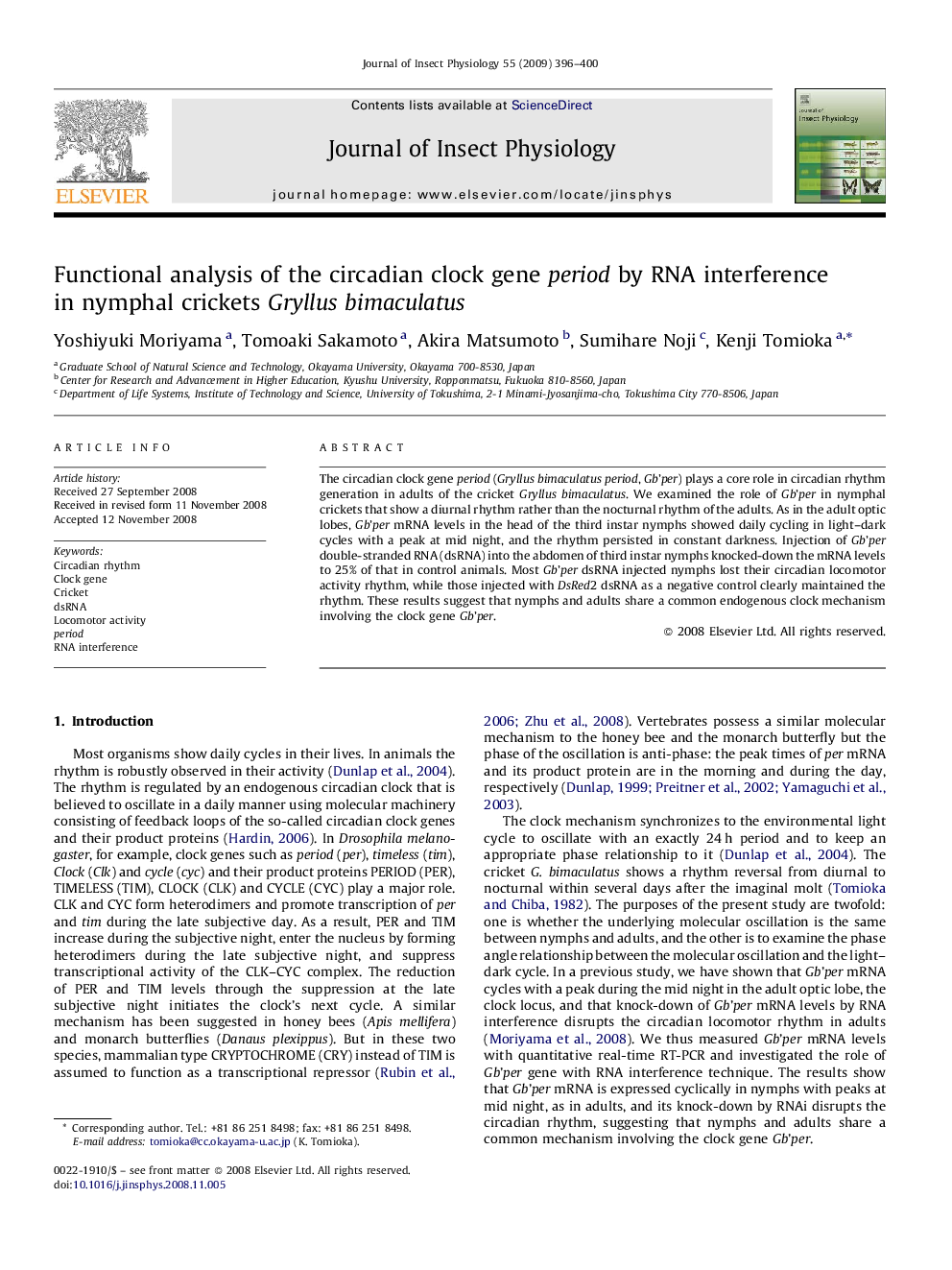| Article ID | Journal | Published Year | Pages | File Type |
|---|---|---|---|---|
| 2841051 | Journal of Insect Physiology | 2009 | 5 Pages |
The circadian clock gene period (Gryllus bimaculatus period, Gb’per) plays a core role in circadian rhythm generation in adults of the cricket Gryllus bimaculatus. We examined the role of Gb’per in nymphal crickets that show a diurnal rhythm rather than the nocturnal rhythm of the adults. As in the adult optic lobes, Gb’per mRNA levels in the head of the third instar nymphs showed daily cycling in light–dark cycles with a peak at mid night, and the rhythm persisted in constant darkness. Injection of Gb’per double-stranded RNA (dsRNA) into the abdomen of third instar nymphs knocked-down the mRNA levels to 25% of that in control animals. Most Gb’per dsRNA injected nymphs lost their circadian locomotor activity rhythm, while those injected with DsRed2 dsRNA as a negative control clearly maintained the rhythm. These results suggest that nymphs and adults share a common endogenous clock mechanism involving the clock gene Gb’per.
